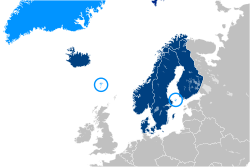
Does anyone have a clue about what is really going on in Afghanistan? And by anyone, I include the likes of Brown and Obama. Day by day we get more reports of bloody fighting with the usual high numbers of civilians killed or severely injured. As regards the development of a stable democratic society in Afghanistan this also seems to be a complete mess, with almost daily reports of corruption and infighting among the various local warlords who seem to have what passes for real power in the country. And of course the fighting has long since passed into north-western Pakistan, with all the possible destabilizing consequences this brings for that country. All for what? Nobody seems to really know.
Our political and military leaders give out different answers depending on who is asked or which day of the week it is. However, more and more people with direct experience on the ground in Afghanistan are speaking out agains this misadventure which is costing so many lives. One of the latest is Matthew Hoh, a former US Marine captain who fought in Iraq, and who later served as a civilian State Department representative in the Zabul province of Afghanistan. Hoh has recently resigned from his post as he longer believes this war is worth fighting. He explains in some detail his reasoning, based on his own experiences in Afghanistan, in his letter of resignation. You can read the full letter here. It was reprinted in an article on the War in Context website. You need to scroll down a bit to get the full letter.
Hoh is just one of many with first hand experience of the war who now object to the whole premiss. However it is interesting to see just who are still vociferously supporting the war. The usual suspects appear of course - the neo-con establishment of armchair warriors who egged us on into invading Iraq and would just love to see us bomb, bomb, bomb Iran. This time around though the top military brass are getting involved. Even in the UK the top military figures are more and more willing to speak out and demand the government give them more of this and that in order to do the job. This politicization of the military is very dangerous and pretty much unheard off in the UK. It is a clear sign of the weakness of the Brown government that it has not sacked some of these generals.
This political involvement of the military has gone further in the USA. There the actions and comments of some generals has been openly described as insubordination. This applies particularly to Gen. Stanley McChrystal, commander in Afghanistan, who, according to one report, “has put on quite a show of insubordination in the past month or so in an attempt to cram his escalation plan down the throat of the America public. He has waged open information warfare in the media, right wing and otherwise, against President Barack Obama. I wonder how much longer Obama will up with it. More to the point, I wonder if he can stand up to it.” This quote is from an online piece by Jeff Huber a now retired Commander in the U.S. Navy. You can read the full piece here.
What is going on? The top US military establishment, including General McChrystal and his boss, David Petraeus, head of Central Command, were of course all appointed by the Bush/Cheney regime. It seems that not surprisingly they are mostly, if not all, of the neo-con persuasion. Faced with a newly elected and popular Democratic President the generals and their allies in the media seem to have decided to go on an all out attack to force the President not just to continue the war in Afghanistan but to up the ante and increase the US forces there. To reinforce their pleas they and a pliant media dole out scary tales of what might happen if the US pulls out - the Taliban and Al-Qaida return not just in Afghanistan, but take over Pakistan as well and before you know it the end of civilization has come.
But why all this rush to escalate the war? None of the generals and their neo-con allies can believe any of this guff about a resurgent Al-Qaida. The answer can only be that the top military brass fear a downsizing of their precious empire. The military are of course not alone. Ever since the 1940s military spending has brought enormous profits to the companies supplying the equipment that all armies need. Just think of all those planes, tanks, helicopters, battleships, aircraft carriers, missiles and all the other bits and pieces that go in to keeping an army, navy and airforce on the go. This infamous military-industrial duopoly has come to exercise enormous power in the USA and to a (slightly) lesser extent in the UK. The military industrial economy is one of the most protected, uncompetitive and thereby one of the, if not the most profitable business in the world. If there was no enemy and no more wars to fight, what would happen to all those profits?
It is no coincidence that the neo-cons and their allies keep banging on about the need for a Long War. A never-ending war suits them just fine. Lots of glory for the generals and even more money for the profiteers. A war atmosphere also helps keep down those nasty liberal civil rights people who might otherwise investigate the relationships involved in this military industrial complex, including the politicians who benefit. Watch our for General McChrystal - the further he goes, the worse it will be for us, never mind the poor long suffering people of Afghanistan.















